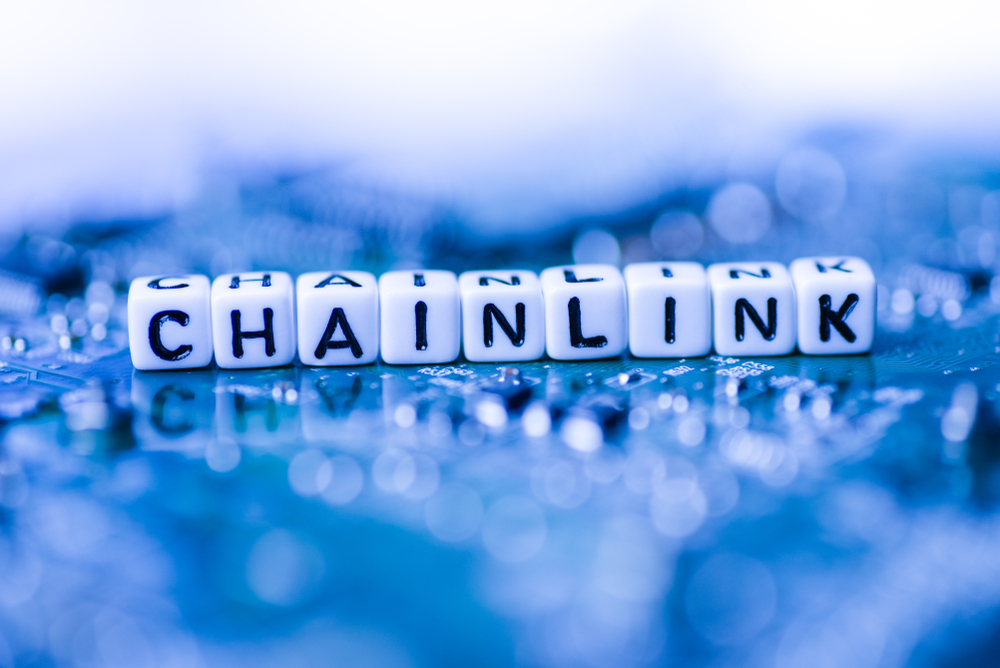Introduction
Blockchain technology is not just limited to changing the economic and monetary infrastructure of the world. The automation applications or decentralized sectors created with the help of blockchain can be geared towards creating a wide variety of use cases.
One such innovative blockchain is Chainlink. This article is going to discuss in detail everything that Chainlink represents and can be used for.
What is Chainlink?
Chainlink is a data-driven technology that is based on the blockchain framework. This platform can allow different blockchain networks to connect. At present, there are several independent blockchain platforms, but there are limited resources for communication, data, and cryptocurrency exchanges between these stand-alone units.
Chainlink can be seen as a middleware that can be used to share data, smart contracts, and other media between different blockchain networks. It is often dubbed a decentralized oracle platform.
An oracle is a type of computer program that is used for collecting data from sensors our other sources into a digitized form that can be calculated. In addition to enabling the collection and transfer of data, Chainlink also offers the ability to compute and verify the data clusters for authentication.
Chainlink contains several types of smart contracts that can be classified as hybrid. Chainlink is ideal for enterprise adoption because of its ability to collect and consolidate off-chain and on-chain data resources.
Corporations can use Chainlink to access the data from major blockchains such as Avalanche and Solana etc. Chainlink is hosted on several blockchain networks and uses the Proof-of-Stake consensus model. It is an open-source project.
How does Chainlink Work?
The main idea behind Chainlink is to create a platform that can provide outside data to a blockchain network. At present, many blockchains use smart contracts and perform transactions based on their on-chain data alone.
However, Chainlink is created to be blockchain agnostic, which means that it can run several blockchain platforms in addition to Ethereum. When a blockchain onboards Chainlink, it can activate new functions such as API integration.
At the same time, the native blockchain can also choose to share its data resources with other DeFi and blockchain networks.
The data transfer functions of Chainlink are not limited to blockchain and DeFi alone. Chainlink is also used for connecting TradiFi Financial enterprises, such as Banks, with blockchain and other cryptocurrency project.
Chainlink utilizes smart contracts to create digital bridges that can be used to not only facilitate transactions but also collect data from the real world such as sports scores or stock market prices etc. Chainlink may also gather and process data in real-time such as attendance during an event etc. It can be seen as an API that is used for cryptocurrency contracts.
Chainlink is connected to a network of decentralized network oracles. These oracles are used for uploading data from external resources to the native platform of an intended blockchain. In this manner, the smart contracts of any blockchain can also interact with the data feed via Chainlink from the real world and refine their operational output.
The developers at Chainlink are working on creating oracles that can access data from multiple resources and source them for several blockchains. There is also a decentralized oracle plan that can collaborate with centralized networks such as crypto exchanges or independent financial enterprise servers.
Importance of Chainlink
There is a real need for blockchain projects like Chainlink. At present, the whole of the internet depends on collecting data and conducting research based on that. The collection of data is used to create new updates, filter out bad features, and improve the user experience of a given website or other digital entity.
However, one of the current issues connected with blockchains is that they depend on smart contracts, meaning they can carry out functions based on the defined conditions to ensure transparency, automation, and user security.
However, these smart contracts are designed to be immutable, which means that they ensure that the conditions defined for them to carry out transactions do not change. In some cases, hackers can exploit the immutability of smart contracts to perform exploits since these smart contracts only have access to the on-chain data.
Therefore, it becomes easier for hackers to overwhelm the system by manipulating the composition of cryptocurrencies in a small DeFi pool and controlling the prices.
However, Chainlink works as an additional data resource that smart contracts can use to calculate a more realistic and global price for cryptocurrencies and bypass such security threats. Additionally, Chainlink can also ensure that blockchains are not.
Origin of Chainlink
Chainlink was first conceptualized and created by a Russian American Computer Scientist named Sergey Nazarov. Another programmer who played the role of the co-founder of Chainlink is Steve Ellis. Both coders also wrote a White Paper for Chainlink protocol in association with Professor Ari Juels from Cornell University.
According to the Chainlink Whitepaper, this decentralized protocol was able to facilitate data for on-chain and off-chain resources. The public debut of Chainlink happened in 2019.
Working in tandem with Juels, Nazarov, and Ellis, integrated Town Crier on Chainlink, which was a trusted execution environment oracle. This oracle allowed Chainlink to connect with Ethereum using web resources such as HTTPS. The trademark for Chainlink was registered in the Cayman Islands in 2019 under the corporate title of Chainlink Sezc Ltd.
In 2020, Chainlink added the DECO protocol that uses Zero-Knowledge Proofs to activate the ability to verify the information. Thus, Chainlink can filter the data to find the most accurate data sets rather than just sourcing them directly to the blockchains.
Furthermore, Zero-knowledge protection provided by DECO allowed Chainlink to secure user information without revealing sensitive data. In 2021, Chainlink co-founders published a new Whitepaper titled Chainlink 2.0.
The blueprint for the upgrade of existing Chainlink talks about improving the capabilities of decentralized oracles and including hybrid smart contracts in addition to utilizing on and off-chain services from oracles.
Chainlink has been able to get a positive response from the financial and tech sector. The project managed to raise $32 million in funding during its first ICO event in 2017 and issued the first round of 1 billion LINK tokens.
In 2019, this project made its public debut on the universal decentralized application host Ethereum blockchain. Before working on Chainlink, Its creator Nazarov built the Secure Asset Exchange or SAE, which was also a decentralized service.
What is LINK?
Chainlink is geared towards improving the performance and scalability of blockchains without having to change their current structure. The project is based on a blockchain model, and therefore it is fully automated and open-sourced.
However, Chainlink has to ensure that its users are incentivized who are providing their data to this decentralized oracle. Therefore, Chainlink has issued a native token called LINK.
This token is used to incentivize the oracles or other data resources that are providing authentic and accurate information resources. LINK is an ERC-667 which is an extension of the ERC-20 standard.
LINK is also used in the PoS consensus mechanism of the Chainlink. The Validators stake their LINK reserves to get a chance to earn data contracts. Therefore, the validators who have staked the highest amount of LINK in the nodes can get the best data contracts with the highest rewards.
However, in case of any unwarranted breach of contract, the nodes can end up losing their staked LINK for good. The price appreciation of LINK is driven by the increasing utility of Chainlink for various decentralized and centralized projects.
The total supply of LINK is capped at 1 billion, and it is ranked as the 15th largest cryptocurrency by market cap in the world.
How to Purchase LINK?
LINK is a well-received cryptocurrency and is considered to have a strong presence in DeFi on account of its practical utility and enterprise demand. Therefore, LINK is listed on all major cryptocurrency exchanges, such as Bybit, Coinbase, and others.
The users who wish to add LINK to their portfolio can create an account of any of the cryptocurrency exchanges of their choice and purchase it directly against fiat or other cryptocurrencies.
On the other hand, there are some platforms where the investors cannot directly purchase LINK but use decentralized exchanges to add it to their portfolios using the swap function.
The price performance of LINK increased significantly during 2020 and 2021. However, LINK still has many new projects and an increasing popularity that makes it a suitable investment at present as well.
Chainlink makes use of a Verifiable Random Function or VRF that can be used to randomize new values. This function is useful for decentralized gaming in making them tamper-proof. It also consists of data feeds that are used for bringing election data to upload at on-chain forums. The
What Factors Affect the Price of LINK?
When talking about Chainlink, many people may come across the term LINK Marines. This is not a technical term but rather a noun that has been adopted to define the LINK, investors, and online community members. Those who are part of LINK marines or wish to join should learn about these important factors that determine the price of LINK:
Chainlink 2.0
Chainlink 2.0 is an upgrade that is already in the phases of testing and creation. The new up-scaled version of Chainlink intends to increase the security for blockchains using the super-liner staking model. It means that it would become almost impossible with the current technology to launch a cyber-attack or manipulate the digital infrastructure.
2.0 decentralized Oracle also plans to replace its current smart contracts with a hybrid version for better off-chain data accessibility. At the same time, the hybrid automation protocols will also increase the throughput speed.
Additionally, the new Chainlink smart contracts will be more adaptable and have better compatibility with various types of blockchain platforms. In this manner, the decentralized application cross-chain feature will evolve faster than ever before.
At present, Chainlink 2.0 release date is unknown, but it can also have a positive impact on the price appreciation of its native currency, LINK.
Public Projects
Chainlink was dubbed as the most successful cryptocurrency project in 2019 on account of rapid appreciation adoption and market capitalization. During this time, Chainlink was able to join forces with some of the biggest fintech projects in the world, such as SWIFT and Google.
SWIFT officially declared that it was partnering with Chainlink to create a native blockchain project in association with other third-party service providers. On the other hand, Chainlink’s association with Google Cloud is also seen as a positive sign by its stakeholders.
However, these rumors were not officiated or confirmed by the Chainlink management, which helped in skyrocketing the fame of this decentralized oracle project.
Partnerships
One of the biggest reasons for the historic six-fold appreciation of LINK is the enterprise adoption of Chainlink. Thus far, the project has partnered with blockchain projects such as Polkadot, Polygon, Hashgraph, and 150 other reputable organizations. Additionally, Chainlink is also working with government projects such as a Blockchain Platform for the State Information Center of China.
The Chainlink team has also picked the ideal durations to promote their native token. For example, the project campaigned online for LINK adoption at the start of 2021 when Bitcoin volatility was at its lowest in the last 3 years. However, there are still not a massive amount of LINK investors.
As per data projection from Etherscan, out of 167K wallets that contain LINK, only 350 have more than 100K LINK tokens. Despite considerable enterprise interest, the majority of LINK tokens are owned and traded by retail investors.
The four addresses with the largest LINK reserves belong to Chainlink, AAVE Credit Pool, and two unknown users.
Types of Smart Contracts on Chainlink
It is not possible to comprehend how Chainlink operates without dissecting the type of smart contract it uses. Here is a brief account of Chainlink smart contracts:
Reputation Contracts
The Reputation Contracts are the smart contracts that verify oracle’s integrity. It means that they perform a background check on the information that has been processed by a given oracle.
These smart contracts filter out the accurate oracles using criteria such as the total number of completed tasks, average response duration, and total LINK staked in the nodes by an oracle under scrutiny.
Order Matching Contracts
The Order Matching Contracts work as Service Level Agreements or SLA finding the best matches for the contracts based on bidding provided by different oracles.
Aggregating Contracts
Aggregating Contracts collect data from different resources, such as oracles, and match them with the most accurate outputs for the smart contracts that will process them further to generate various results.
Analyzing Contracts
In the end, the data that has been compiled by the aggregating contracts are analyzed to find out the most authentic and realistic outcomes. At the end of the process, the users can pay a fee in the form of a LINK to access the filtered, and vetted data feeds.
How does Chainlink Interact with Oracles?
Here are the two main ways that the Chainlink protocol can interact and communicate with oracles:
Chainlink offers Reference points that are on-chain points for accessing off-chain data. These resources keep updating at regular intervals. The data collection from reference points is done quickly and efficiently within a single transaction.
Chainlink users can generate an initial request to the LINK contract. The protocol ascertains the right amount of LINK reserves to complete this request using a callback function. In the next step, it contacts oracle and generates an external API request to send out for required data collection as per the specifications in the client’s initial contract.
Advantages of Chainlink
Chainlink has reinforced the practical application and utility of blockchain and cryptocurrency technologies. It has been adopted by several financial enterprises from the government and private sectors to acquire or improve the scalability, reliability, and security aspects of existing software.
At the same time, Chainlink has also increased the relevance and wider adoption for every DeFi and smart contracts-based technology on account of linking it with external data resources. Chainlink also works as a bridge between traditional and decentralized financial sectors.
Transaction processors like PayPal, VISA, and Mastercard can deploy smart contracts on Ethereum for execution. In the same manner, banks can also wire cryptocurrencies and fiat through smart contracts using Chainlink. At the same time, Chainlink also improves the interoperability between blockchains without compromising their security.
It means that Chainlink has opened the gates of IoT, such as supply management and in other areas for DeFi. However, the project has received criticism on account of selling only 35% total LINK supply to retail investors.
Conclusion
Chainlink is one of the top cryptocurrency projects in the world based on a solid utility. The project has also been associated with major cryptocurrency programs such as JustLink, MakerDAO, and Polkadot.
At present, Chainlink has 315 integrations, including 98 DeFi, 74 blockchains, 23 data providers, and 44 nodes. Its universal adoption and wide utility within and outside of the DeFi sector make it a reliable and ideal project for investing.







More Stories
Post Ethereum Merge: Grayscale Seeks More Time To Review ETHPoW Stance
SEC Chair Suggests Regulating Proof-Of-Stake Ethereum Projects As Securities
AllianceBlock And ABO Digital Partner For Crypto Project Financing